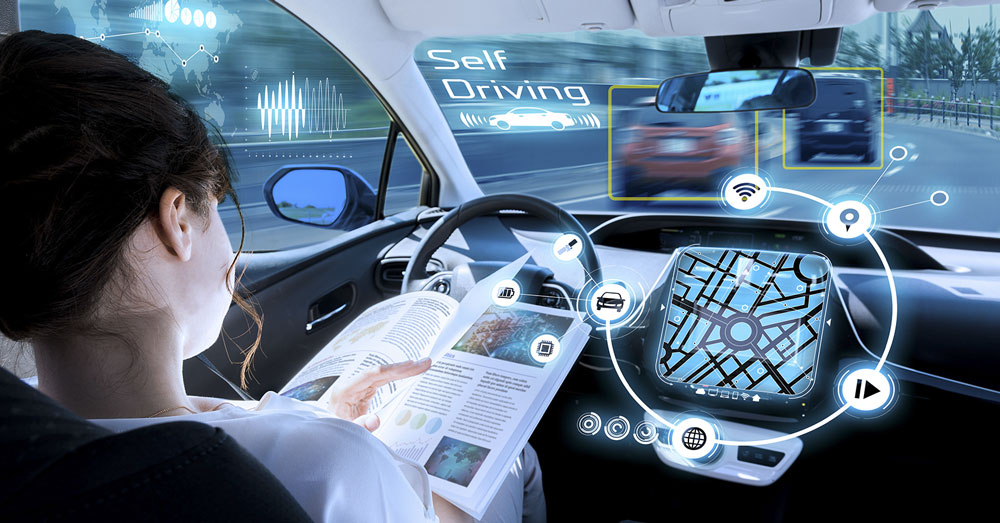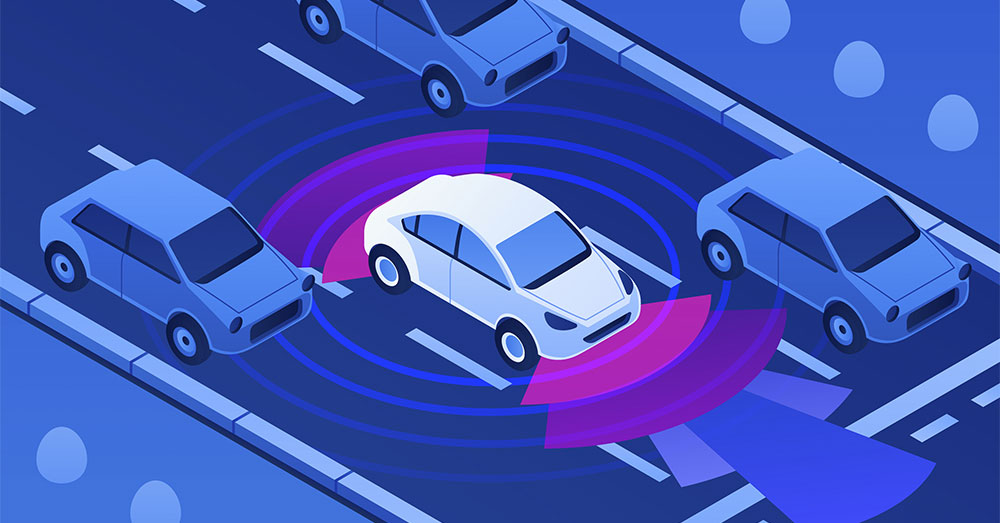One of the most popular use cases of AI and Data Annotation is Autonomous Car. The idea of Autonomous Cars (or Self-Driving Cars) has always been a fascinating field for exploitation, even in entertainment or actual transportation.
This was once just a fictional outlook, but with the evolution of information technology and the technical knowledge obtained over the years, autonomous cars are now possible.

Data Annotation for autonomous cars
Perhaps the most famous implementation of AI and Data Annotation in Autonomous Cars is Tesla Autopilot, which enables your car to steer, accelerate and brake automatically within its lane under your active supervision, assisting with the most burdensome parts of driving.
However, Tesla Autopilot has only been confirmed of success in several Western countries. The real question here is that: “Can Tesla Autopilot be used in highly congested roads of South-East Asia countries?”
The role of Data Annotation in AI-Powered Autonomous Cars
Artificial Intelligence (AI) is the leading trend of Industry 4.0, there’s no denying that. Big words and the “visionary” outlook of AI in everyday life are really fascinating, but the actual implementation of this is often overlooked.
In fact, the beginning of AI implementation started off years ago with the foundation of a virtual assistant, which we often see in fictional blockbuster movies. In these movies, the world is dominated by machines and automation. Especially, vehicles such as cars, ships and planes are well taken care of thanks to an AI-Powered Controlling System.
With the innovation of multiple aspects of AI Development, many of the above have become true, including the success in Autonomous/Self-Driving Cars.
Training data with high accuracy
The two important features of a self-driving car are hardware and software. For an autonomous car to function properly, it is required to sense the surrounding environment and navigate objects without human intervention.
The hardware keeps the car running on the roads. Besides, the hardware of an autonomous car also contains cameras, heat sensors or anything else that could detect the presence of objects/humans.
The software is perhaps the standing point of this, in which it has machine learning algorithms that have been trained.
|
Labeled datasets play an important role as the data input for the aforementioned learning algorithms. Once annotated, these datasets will enrich the “learning ability” of AI software, hence improving the adaptability of the vehicles.
|
With high accuracy of the labeled datasets, the algorithm’s performance will be better. The poor-performing data annotation can lead to possible errors during a driving experience, which can be really dangerous.
Enhanced Experience for End-users
Who wouldn’t pay for the top-notch experience? Take Tesla as your example. Tesla models are the standard, the benchmark that people unconsciously set for other autonomous vehicle brands. From their designs to how the Autopilot handles self-driving experience, they are combined to create a sense of not only class but also safety.
How Tesla designs their cars is a different story. What really matters for the sake of their customers is safety.
Leaving everything for “the machine” might be frightening at first, but Tesla also guarantees that through many of the experiments and versions of the AI software. In fact, it was proven that Tesla Autopilot can easily run on highway roads of multiple Western countries.

Self-driving Cars
We might have seen the footage of how Tesla Autopilot Model X was defeated on the highly congested roads of Vietnam. However, we have to take a look back at the scenario in which we need an autonomous car the most.
The answer here is the freeway and highway. And Tesla can do very well on these roads.
The role of data annotation in this case is that through the high-quality annotated datasets, the machine is trained with high frequency, therefore securing safety for passengers.
The future of autonomous vehicles
We don’t simply jump from No Driving Automation to Full Driving Automation. In fact, we are barely at Level 3, which is Conditional Driving Automation.
- Level 0 (No Driving Automation): The vehicles are manually controlled. Some features are designed to “pop up” automatically whenever problems occur.
- Level 1 (Driver Assistance): The vehicles feature single automated systems for driver assistance, such as steering or accelerating (cruise control).
- Level 2: (Partial Driving Automation): The vehicles support ADAS (steering and accelerating). Here the automation falls short of self-driving because a human sits in the driver’s seat and can take control of the car at any time.
- Level 3 (Conditional Driving Automation): The vehicles have “environmental detection” capabilities and can make informed decisions for themselves, such as accelerating past a slow-moving vehicle. But they still require human override. The driver must remain alert and ready to take control if the system is unable to execute the task. Tesla Autopilot is qualified as Level 3.
- Level 4 (High Driving Automation): The vehicles can operate in self-driving mode within a limited area.
- Level 5 (Full Driving Automation): The vehicles do not require human attention. There’s no steering wheel or acceleration/braking pedal. We are far from Level 5.
With Tesla Autopilot qualified as Level 3, we are only halfway through the journey to the full driving automation.
However, we personally think that the matter of these Level 3 vehicles is the training data for the AI system. The datasets that have been poured into this are very limited, possibly can be compared to just a drop in the ocean.
|
To train the AI system is no easy task, as the datasets require not only accuracy but also high quality, not to mention the enormous amount of them.
|
The speed in which Tesla or any other autonomous vehicle company is going for is quite high in order to be ahead of the competition. Instead of doing it themselves, these companies often seek help at some outsourcing vendor for better management and execution of data processing. These vendors can help with both data collecting and data annotating.
Want to join the autonomous market without worrying about data annotation? Get consults from LQA to come up with the best-fitted data annotation tool for your business. Contact us now for full support from experts.
- Website: https://www.lotus-qa.com/
- Tel: (+84) 24-6660-7474
- Fanpage: https://www.facebook.com/LotusQualityAssurance

